If you haven’t tried Filipino chicken adobo yet, you’re missing out. It’s only the national food of the Philippines!
This classic dish showcases the simplicity yet ingenuity of Filipino cuisine.
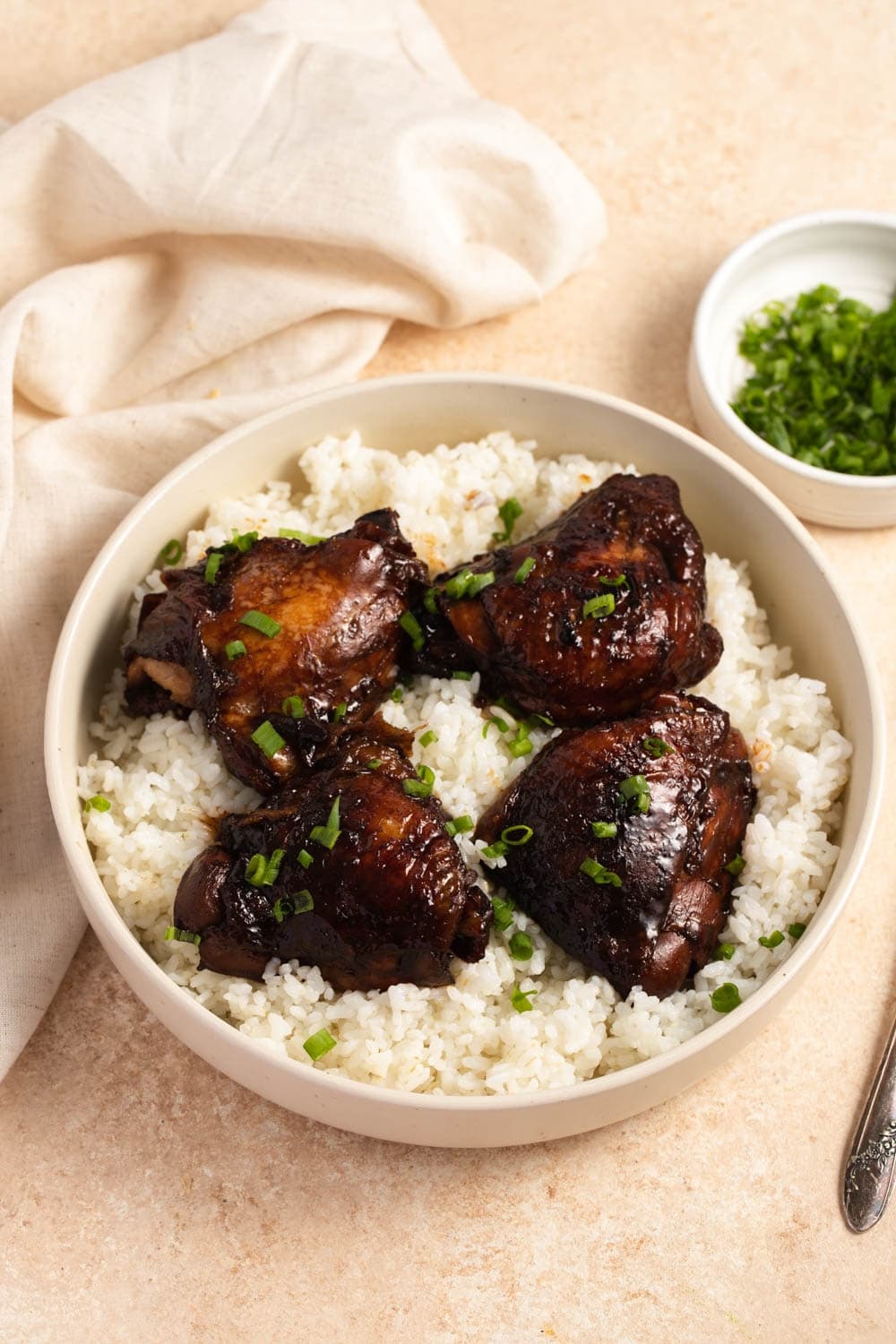
It features pieces of bone-in chicken braised in a rich soy and vinegar sauce. Every bite is flavored with garlic, peppercorns, and bay leaves.
The sauce thickens as it simmers, coating the chicken in a golden glaze. It’s served on a bed of steamed white rice for a hearty and delicious meal.
Take your taste buds on an adventure with the mouthwatering goodness of Filipino chicken adobo! Let’s begin.
Filipino Chicken Adobo
It’s the unofficial national dish of the Philippines. And it has captured the hearts (and stomachs) of foodies everywhere.
It’s not surprising considering its unique blend of tangy, savory, and almost sweet flavors.
The term adobo is derived from the Spanish word adobar, meaning “to marinate.”
The recipe is achieved by marinating and cooking meat in soy sauce and vinegar.
Cooking meat in vinegar isn’t a new practice in the Philippines. It was a common food preservation technique back in pre-refrigerator times.
There are many varieties of adobo. But this recipe, along with pork adobo, reigns supreme.
Adobo is made with tender pieces of bone-in chicken simmered in an indulgent sauce.
The soy sauce and vinegar base is infused with garlic, peppercorns, and bay leaves.
This classic Filipino recipe is simple yet brilliant. It’s guaranteed to leave you reaching for seconds.
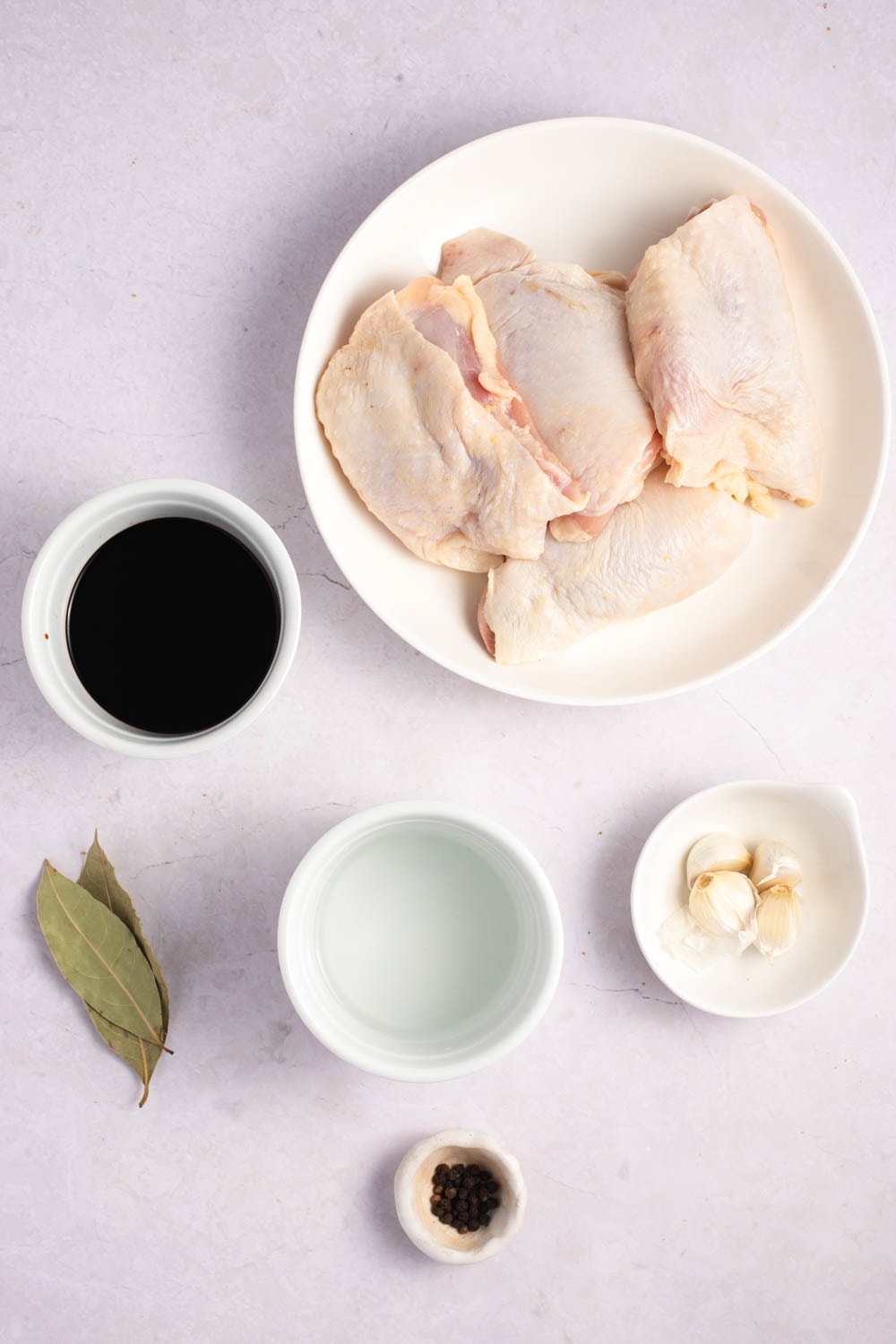
Ingredients
Bone-in Chicken
Traditional Filipino adobo calls for all the segments of the chicken. You can use drumsticks, wings, and tenders. You name it.
Some don’t add the breasts because they dry out. Others prefer just the drumsticks. I like the thighs most because they’re the juiciest, most flavorful cut.
Whichever part of the chicken you choose, use bone-in for maximum flavor.
Soy Sauce
Soy sauce is the primary ingredient that makes up the adobo’s iconic sauce. It’s where the dish gets its savory, umami-rich flavor and golden brown hue.
Naturally, the best soy sauce to use is any Filipino brand of soy sauce. Kikkoman and other Asian brands just do not cut it.
Also, stick to regular soy sauce instead of dark or light varieties. They’re not as salty.
Vinegar
Vinegar is the second main component of the sauce. Adobo sauce is made of equal parts soy sauce and vinegar. It sounds like a LOT of vinegar, but trust the process!
The combination of soy sauce and vinegar produces a robust savory flavor. You won’t taste the sharp acidity of the vinegar at all.
The best vinegar to use here is cane vinegar because it’s milder than other varieties. White vinegar works, too, though.
Crushed Garlic
Classic adobo has a strong garlicky flavor. For best results, crush the garlic to release all its flavors.
Cracked Black Peppercorns
They’re more than just a seasoning! Their aromatic and spicy flavor makes them an essential ingredient in classic adobo.
Bay Leaves
These are non-negotiable when making Filipino adobo. Bay leaves have a subtle herbal flavor that complements the tangy adobo.
They also have a distinct aroma that releases as they heat. So, bay leaves add a pleasant and inviting scent to the dish.
Moreover, bay leaves are added to adobo as a natural preservative. The leaves contain compounds that inhibit the growth of bacteria and fungi. This helps to extend the shelf life of adobo.
Sugar
This one is optional, but I find it gives a nice balance to the sauce. If you don’t like some sweetness to your adobo, leave the sugar out.
Steamed White Rice
It’s technically not part of the dish, but you simply cannot eat adobo without rice. It’s just not done!
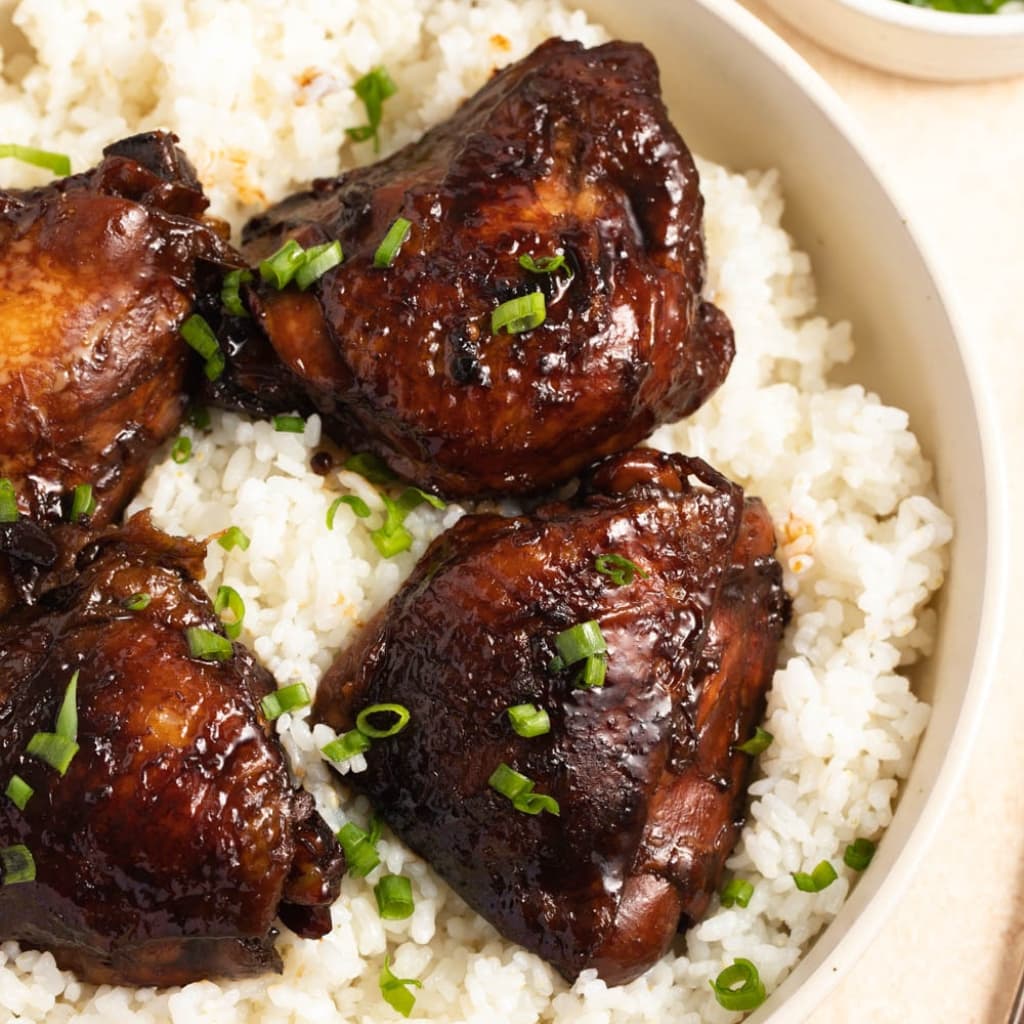
How to Make Filipino Chicken Adobo
1. Marinate the chicken.
Marinate chicken thighs in equal parts vinegar and soy sauce, peppercorns, bay leaves, and sugar.
Do this for at least 30 minutes. However, the longer the chicken sits, the more flavorful it gets.
Note: some Filipinos don’t think marinating the chicken is necessary. So if you’re short on time, you can skip this step.
2. Braise the chicken.
Once marinated, dump everything – marinade included – into a large skillet. You might think there’s too much sauce, but don’t worry, it’ll reduce as it simmers.
Bring the mixture to a boil. Lower the heat and let the adobo simmer for 30 minutes.
Remove the lid and let it simmer for another 20 minutes. The goal here is to reduce the marinade into a thick sauce.
3. Serve and enjoy.
The best way to enjoy Filipino chicken adobo is to eat it with steamed white rice. Mix some of the sauce with the rice to give it flavor. Yum.
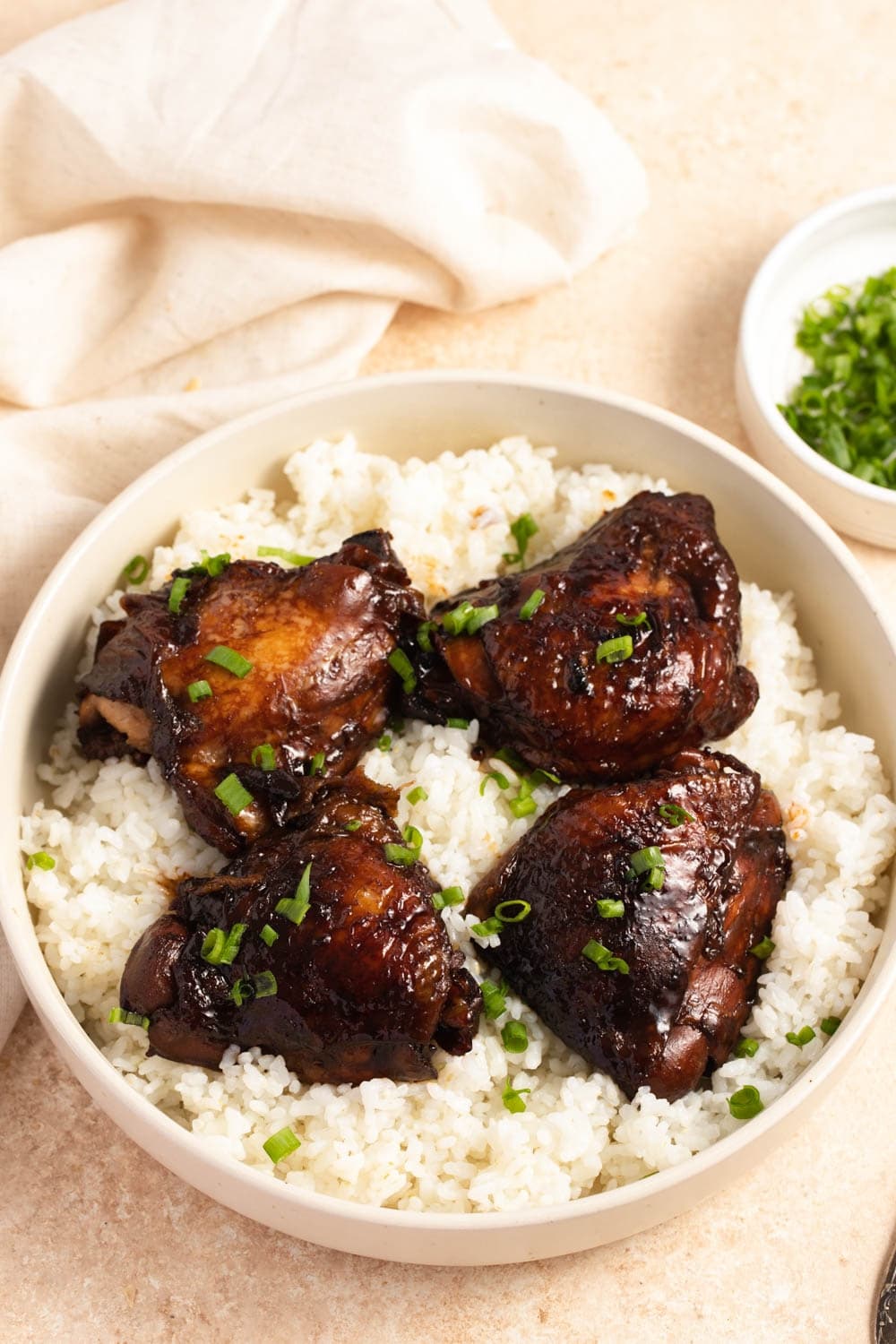
Tips for the Best Chicken Adobo
- Traditional Filipino adobo typically features various chicken segments- thighs, drumsticks, and wings. Everything but the breasts. I opt for only the thighs because they’re juicier and more flavorful.
- While this recipe calls for marinating the chicken beforehand, some Filipinos don’t find it necessary. The chicken becomes flavorful enough from being simmered in the sauce. I leave this decision to you.
- If you’re not pressed for time, pan-fry the chicken thighs after marinating. It takes an extra 10 minutes (5 minutes per side). But a quick sear will add significant flavor to the chicken.
- Do not stir the soy sauce and vinegar. Pour the liquids into the skillet and leave them be. The vinegar remains at the bottom of the skillet, burning off some of its acidity.
- Flip the chicken halfway through marinating and cooking to ensure all sides are well-flavored.
- Make your adobo spicy by adding red pepper or chili flakes. Do this toward the end of cooking.
- If you don’t like a hint of sweetness to your adobo, skip the sugar.
Variations
Did you know that there are over 100 adobo varieties? So if you want to switch things up, you have endless options. These are my top three:
- Pork Adobo – This variety is my absolute favorite, and you must try it. Use cubes of fatty pork shoulder instead of chicken. Trust me, it’s a game-changer!
- You can also use a mix of both chicken and pork.
- Pininyahang Adobo (Adobo with Pineapple) – Add pineapple chunks and a splash of pineapple juice to your adobo. Every bite is sweet and tropical!
- Adobo with Boiled Eggs – Want an extra protein boost? Throw in some hard-boiled eggs at the last 5 minutes of cooking.
Got Leftovers?
Filipinos hate wasting food, which makes them experts at repurposing yesterday’s meal into today’s breakfast.
Here’s what you can do with leftover adobo:
- Make an adobo sandwich. Shred the chicken, mix it with mayo, and slather it onto a piece of bread. Cover it up with another slice of bread, and enjoy.
- Make adobo fried rice. Debone and shred or chop the chicken. Then, add it, plus the sauce, to your fried rice.
- Make crispy adobo flakes. Shred leftover chicken adobo and fry it over medium heat for about 10 minutes. The chicken should be dry and crisp.
Let it rest on a plated line with paper towels. Serve with rice and a sunny-side-up egg.
How to Store
To Store and Make Ahead
You can whip up Filipino chicken adobo 3 to 4 days in advance. The great thing about this dish is it tastes even better the next day!
Allow the adobo to cool completely and place it in an airtight container. Refrigerate for up to 4 days.
To Reheat
For smaller portions, reheat leftover chicken adobo in the microwave until warm.
For large portions, reheat in a pot on the stovetop at medium heat, stirring occasionally. It’s ready when it’s hot.
To Freeze
Transfer the chicken adobo into a freezer-safe container and freeze for up to 4 months.
To Thaw and Reheat
Allow frozen chicken adobo to thaw in the fridge the night before. Or, set it out on the counter for 30 minutes.
Reheat using the same stovetop or microwave methods as above.

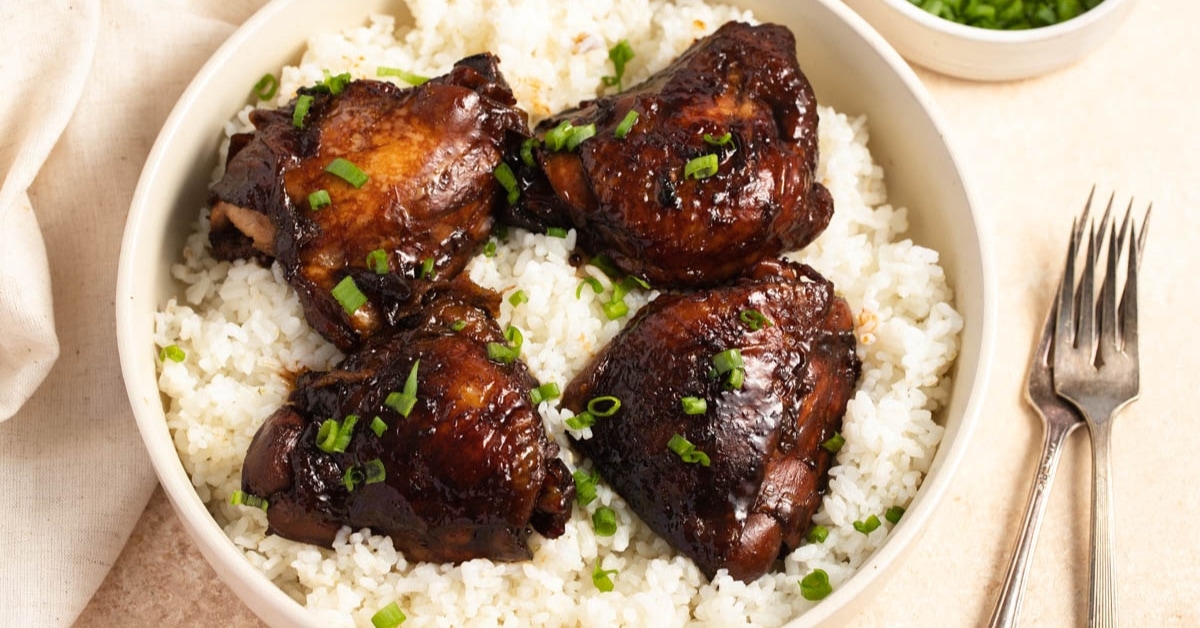


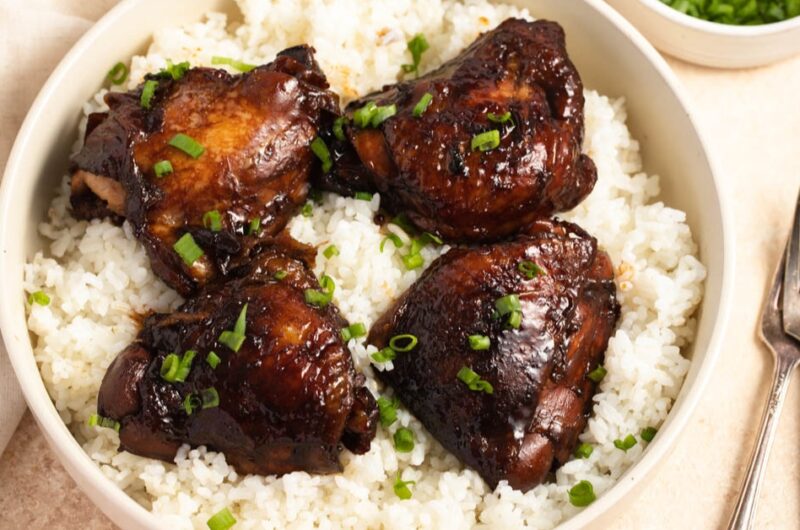






Do you marinate at room temperature or in the refrigerator?
Hi Holly!
For chicken, you always want to marinade in the fridge, to ensure it’s safe to eat 🙂